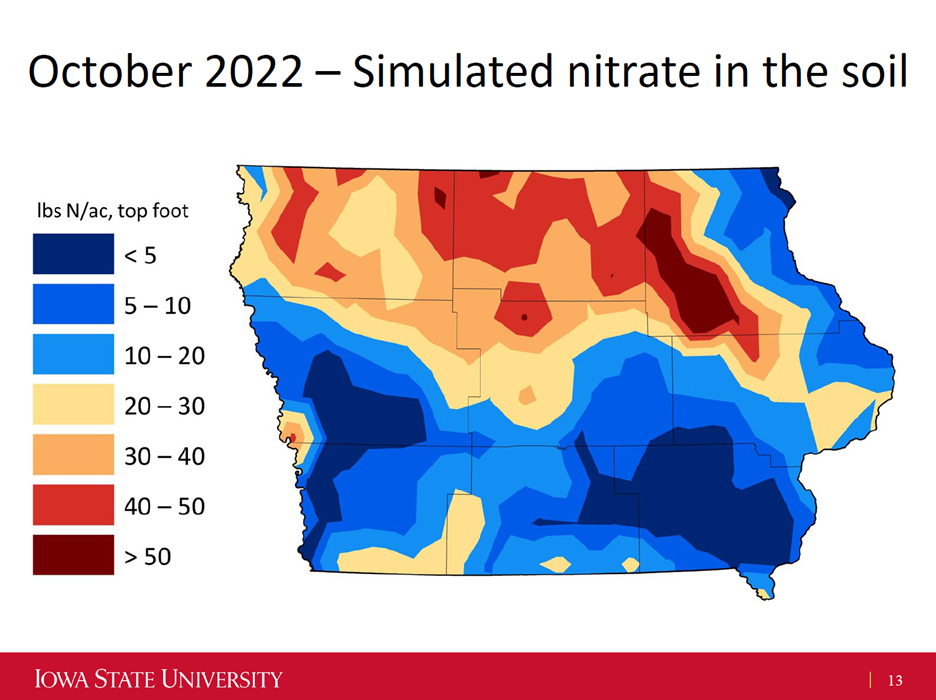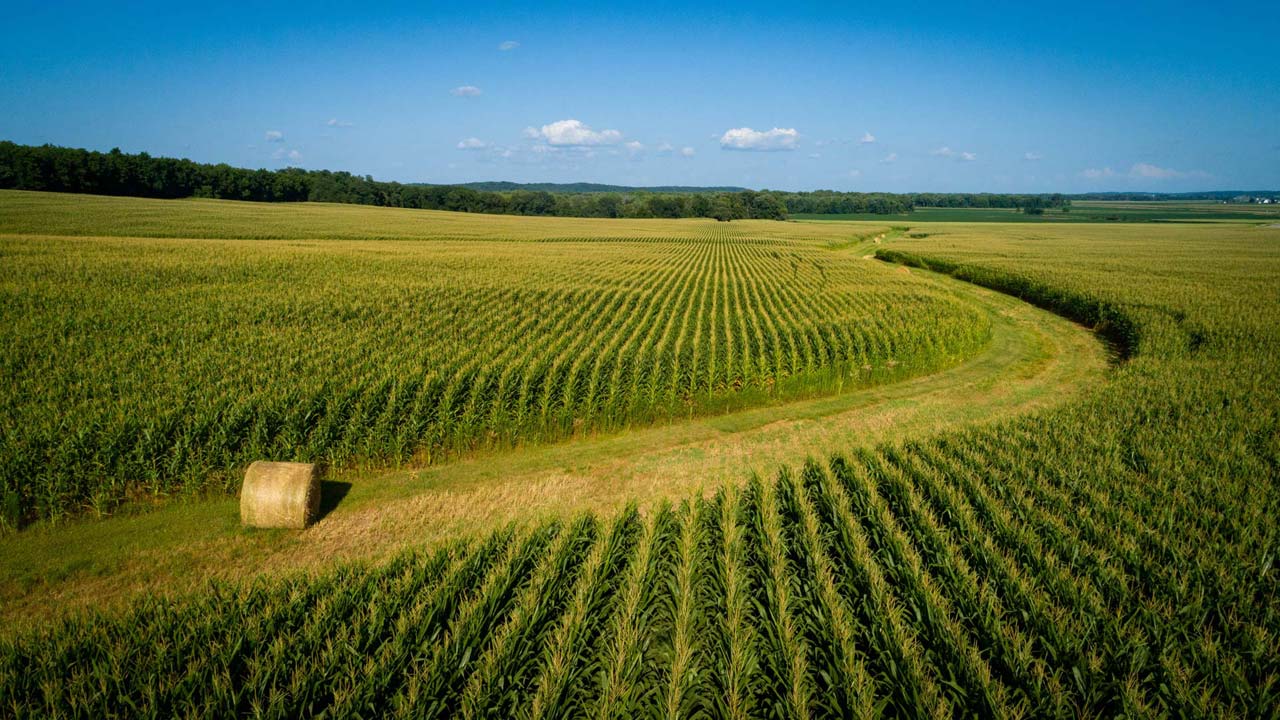2022 December Stewardship Advocate
Weather is an unpredictable wild card for Iowa’s farmers and has a major impact on the nitrogen status of fields both during and after the growing season. This is a good time to remind everyone about the importance of considering residual nitrate levels in soils after the growing season.
Both dry and wet conditions can affect nitrate levels in the soil. Dry conditions reduce nitrogen losses: lower precipitation moves less nitrate from the soil to rivers and streams. Dry soils also limit microbial denitrification losses to the atmosphere. Lower nitrogen losses are a good thing, but the nitrate that remains is susceptible to loss, especially through leaching in the early spring. Farmers in drought-stricken regions of the state have an opportunity to retain and use that nitrate. Soil testing can help farmers determine how much nitrate remains, and cover crops can help retain what remains in the soil.
Iowa State University predictive models indicate that some Iowa soils currently have more nitrate than in an average fall, especially in north-central and north-eastern Iowa. That’s why Iowa Corn and Iowa State University are encouraging Iowa farmers to take important steps to better manage soil nitrogen this fall and next spring so we can help avoid potential water quality challenges in 2023.
We experienced similar conditions last year when environmental conditions provided just enough moisture for high crop yields and high soil nitrogen mineralization, but not enough moisture for to produce significant nitrogen losses. This resulted in high soil nitrate levels after harvest. Early calls to better manage that fall nitrate avoided some losses downstream. However, nitrate levels in the Des Moines and Racoon Rivers, still briefly exceeded the 10 parts per million Safe Drinking Water Act Standard due to the combination of high residual fall nitrate and spring precipitation.
Therefore, we are encouraging Iowa farmers to take extra steps to carefully manage future nitrogen fertilizer applications – especially this fall.
We encourage Iowa farmers to talk with their Certified Crop Advisor (CCA) or agronomist and consider the following:
- Soil testing. Determine field soil nitrate levels: yields may be surprisingly high despite the drought, but soil nitrate levels may also be surprisingly high due to the drought.
- Fertilizer application options. If soil nitrate levels are high, reduce fall fertilizer application, split fertilizer application between the fall and the spring or apply 100% in the spring.
- Plant cover crops. Uses excess nitrate, reduce erosion and improve soil health by planting cover crops.
- Use nitrification inhibitor products. All fall nitrogen applications should be accompanied by a nitrification inhibitor regardless of drought and soil nitrate status.
- Soil temps matter. Regardless of drought or soil nitrogen status, soil temperatures at 4-inches must be below 50 degrees and trending downwards before applying fall nitrogen fertilizer.
We applaud farmers throughout Iowa and the entire Corn Belt for increasing use of the 4Rs of Nutrient Stewardship to ensure that the Right Source of fertilizer is applied in the Right Place, at the Right Rate, and at the Right Time. Considering the current drought conditions and potentially high nitrate levels in our soil, we encourage Iowa farmers to take extra steps to carefully manage nitrogen fertilizer this fall to help keep nitrates out of our waterways next spring.
To learn more about the optimal rate for their farm, Iowa farmers are encouraged to participate in the on-farm nitrogen rate trials being conducted in 2023 through the Iowa Nitrogen Initiative. To learn more about participating, visit agron.iastate.edu/ini.
This article was based on an Op-Ed piece published in the Des Moines Register in the fall of 2021 by Lance Lillibridge, the Iowa Corn Growers Association Chair who farms in Benton County, and Dr. Mike Castellano, Professor of Agronomy at Iowa State University.

LATEST INFORMATION:
Decode 6 – Decoding Carbon and Ecosystem Services
Partnerships for Climate-Smart Commodities Project Summaries
New Value Chain Possibilities for Grass-to-Gas Explored
Midwest cover crop planting at an all-time high, study shows
UPCOMING EVENTS:
January 5, 2023 – Commercial Manure Applicators Certification – Multiple sites across the state
January 5-6, 2023 – Harmful Algal Bloom Research Symposium – Virtual
January 11, 2023 – Iowa Learning Farms Webinar – Joe Otto, Soil and Water Conservation Society – Virtual
January 18, 2023 – Iowa Learning Farms Webinar – Lee Burras, Iowa State University – Virtual
January 19-21, 2023 – Practical Farmers of Iowa Annual Conference – Ames
FARMER TO FARMER VIDEO
Want to get engaged and learn more about the Iowa Nitrogen initiative? Hear from Dr. Mike Castellano about the program.
